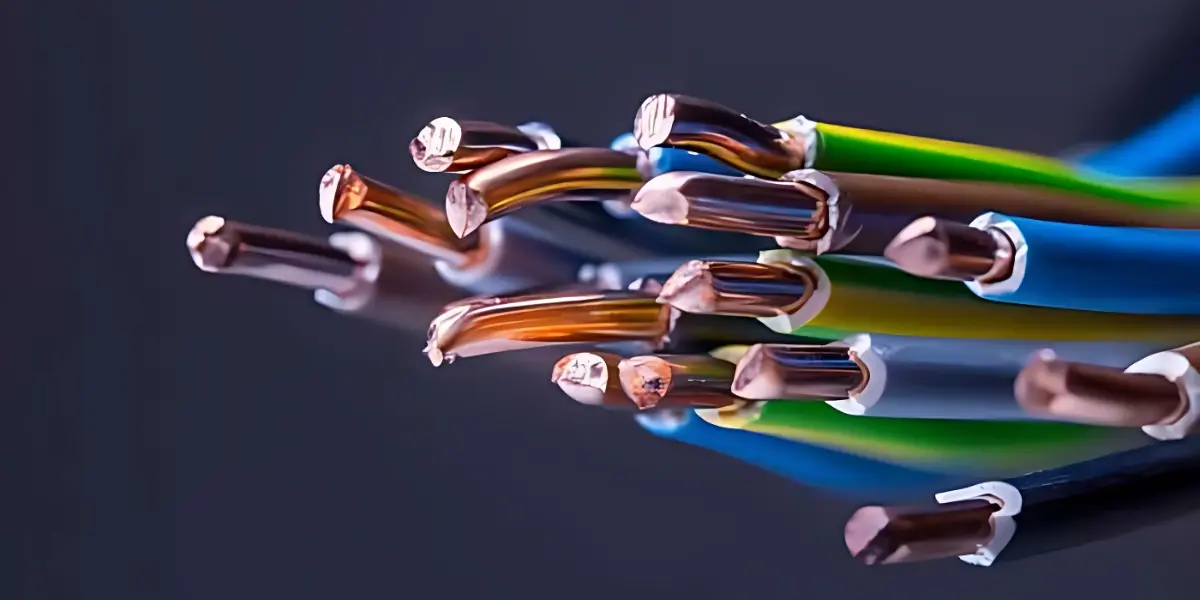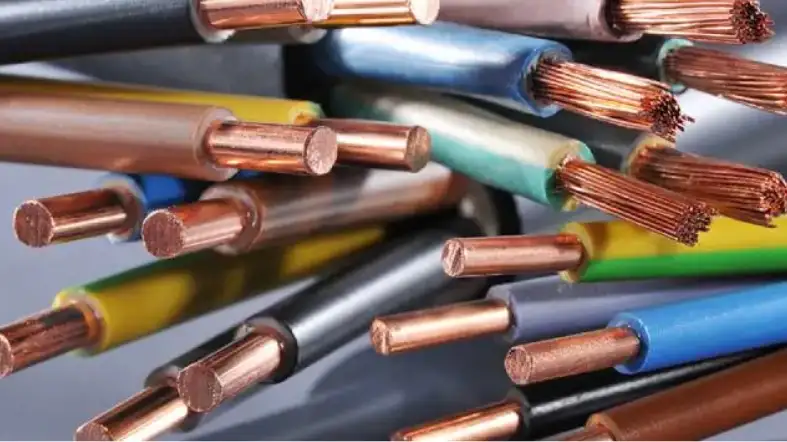Wire size is a crucial factor in electrical systems when it comes to avoiding risks such as overheating and voltage dips.
So before starting any heavy-duty electrical project, you must know what size wire for 100 amp service. However, there are several factors that can affect the wire size you need.
In this blog, we will guide you through the process of calculating the wire size for a 100-amp service, and provide you with all the information you need to make an informed decision.

What Size Wire is Needed for a 100 Amp Service?
For a 100-amp service, the recommended wire size is either 2 AWG, 4 AWG, or 1/0 AWG wire for copper wiring, and 2 AWG, 1 AWG, or 1/0 AWG for aluminum or copper-clad wiring. The minimum wire size that you can use for a 100-amp service is 4 gauge copper or 2 gauge aluminum.
Wire Sizes Chart for 100 amp Service:
| Distance (Feet) | Minimum Wire Size (Copper) | Recommended Wire Sizes (Copper) | Minimum Wire Size (Aluminum or Copper-Clad) | Recommended Wire Sizes (Aluminum or Copper-Clad) |
|---|---|---|---|---|
| Up to 50 | 4 Gauge | 2 AWG, 4 AWG, 1/0 AWG | 2 Gauge | 2 AWG, 1 AWG, 1/0 AWG |
| Over 50 | 2 Gauge | 2 AWG, 1/0 AWG | 1 Gauge | 1 AWG, 1/0 AWG |
Different Types of Wires Suitable for 100 Amp Service
Copper Wires
Copper is a good conductor of electricity and is commonly used for wiring. It’s durable and resistant to corrosion.
Aluminum Wires
Aluminum is also a good conductor of electricity and is lighter and less expensive than copper. However, it’s not as durable and can corrode over time.
Service Entrance Wires
Service entrance wires are used to connect the electrical service panel to the utility company’s power lines. They’re designed to withstand outdoor conditions.
THHN/THWN Wires
THHN and THWN are types of insulation used on wires. They’re heat-resistant and suitable for use in dry or wet conditions.
Guidelines to Follow When Choosing Wire Size for 100 Amp Service
When choosing the wire size for a 100-amp service, it’s important to follow some guidelines to ensure safety and efficiency. Here are some key things to keep in mind:
National Electrical Code (NEC) Requirements
The NEC sets standards for electrical wiring in the United States. Make sure your wire size meets the NEC requirements.
The NEC specifies that a wire must be able to safely carry the current it is rated for, without overheating or causing a fire hazard.
For a 100-amp service, the NEC recommends using a wire that is at least #4 AWG if it is made of copper, or #2 AWG if it is made of aluminum.
Local Building Codes
Local building codes may have additional requirements for electrical wiring. Check with your local building department to make sure you’re following the rules.
Some local codes may have stricter requirements than the NEC, so it’s important to check with your local authorities before starting any electrical work.
Wire Insulation Types and Ratings
The insulation on a wire protects it from heat and moisture. Make sure you choose a wire with the right insulation type and rating for your needs.
Different types of insulation have different temperature ratings, so it’s important to choose a wire with insulation that can withstand the temperatures it will be exposed to.
Factors Affecting Wire Size Selection for 100 Amp Service

There are several factors that can affect the wire size you need for a 100-amp service. Here are some key things to consider:
Material Composition
Copper and aluminum have different conductivity levels, so you’ll need a different wire size depending on which material you choose.
Copper is a better conductor than aluminum, so you can use a smaller wire size if you choose copper. For example, for a 100-amp service, you can use #4 AWG copper wire or #2 AWG aluminum wire.
Length of Run
The longer the wire, the more resistance it will have. This means that electricity will have a harder time flowing through the wire, and you may experience a voltage drop. To reduce voltage drop, you may need to use a larger wire size for longer runs.
Ambient Temperature
High temperatures can increase the resistance of a wire. This means that the wire will have a harder time carrying electricity, and you may experience a voltage drop. To reduce voltage drop in hot environments, you may need to use a larger wire size.
Voltage Drop Considerations
Voltage drop is the loss of voltage as electricity travels along a wire. To maintain consistent power, you want to keep voltage drops to a minimum.
You may need to use a larger wire size to reduce voltage drop and maintain consistent power.
Conduit Sizing
A conduit is used to protect wires from damage. Make sure your conduit is large enough to accommodate the wire size you choose.
If your conduit is too small, the wires may become damaged or overheat, which can be dangerous.
Cost and Budget
Larger wire sizes can be more expensive than smaller wire sizes. Consider your budget when choosing a wire size for your 100-amp service.
While it’s important to choose the right wire size for safety and efficiency, you also want to make sure that it fits within your budget.
Safety Standards
Safety should always be your top priority when working with electricity. Make sure you choose a wire size that meets all safety standards and requirements.
Phase and Voltage of Service
The phase and voltage of your service can affect the wire size you need. Make sure you choose the right size for your specific needs.
Grounding Requirements
Grounding is important for safety. Make sure you follow all grounding requirements when choosing a wire size for your 100-amp service.
How to Calculate Wire Size for 100-Amp Service
Calculating the wire size for a 100-amp service involves considering several factors to ensure safety and efficiency. Here are the steps you can follow to calculate the wire size for a 100-amp service:
Determine the Material Composition
The first step is to determine the material composition of the wire you want to use. Copper and aluminum have different conductivity levels, so you’ll need a different wire size depending on which material you choose.
Copper is a better conductor than aluminum, so you can use a smaller wire size if you choose copper.
Consider the Length of Run
The next step is to consider the length of the wire run. The longer the wire, the more resistance it will have, which can cause a voltage drop.
To reduce voltage drop, you may need to use a larger wire size for longer runs.
Factor in Ambient Temperature
Ambient temperature can also affect the wire size you need. High temperatures can increase the resistance of a wire, which can cause a voltage drop. To reduce voltage drop in hot environments, you may need to use a larger wire size.
Take Voltage Drop into Consideration
Voltage drop is the loss of voltage as electricity travels along a wire. To maintain consistent power, you want to keep voltage drops to a minimum.
You may need to use a larger wire size to reduce voltage drop and maintain consistent power.
Check Conduit Sizing
A conduit is used to protect wires from damage. Make sure your conduit is large enough to accommodate the wire size you choose. If your conduit is too small, the wires may become damaged or overheat, which can be dangerous.
How to Properly Install Wires for a 100 Amp Service

Installing wires for a 100-amp service requires some tools and knowledge of electrical work. Here’s what you’ll need:
Tools Required
- Wire strippers.
- Screwdrivers.
- Pliers.
- Electrical tape.
Safety Precautions
- Always turn off the power before working on electrical wiring.
- Wear protective gear such as gloves and safety glasses.
Step-by-Step Installation Guide
- Turn off the power at the main breaker.
- Strip the insulation from the ends of the wires using wire strippers.
- Connect the wires to the appropriate terminals on the service panel using screwdrivers and pliers.
- Secure the wires in place using electrical tape.
- Turn the power back on and test the circuit.
Common Mistakes to Avoid
When installing wires for a 100-amp service, there are some common mistakes you should avoid to ensure safety and efficiency. Here are some key things to keep in mind:
Using Undersized Wires
Using wires that are too small can lead to overheating and fire hazards. Make sure you choose the right wire size for your needs.
For example, if you use a wire that is too small for a 100-amp service, it may not be able to handle the current safely, which can cause the wire to overheat and potentially start a fire.
Ignoring Local Codes
Local building codes may have additional requirements for electrical wiring. Make sure you follow all local codes to avoid problems.
For example, if your local building code requires a larger wire size than the NEC recommends, you’ll need to use the larger size to comply with the code.
Improper Grounding
Grounding is important for safety. Make sure you follow all grounding requirements when installing wires.
For example, if you don’t properly ground your 100-amp service, it can create a dangerous situation where electricity can flow through unintended paths, such as through a person’s body.
Using Wrong Type of Wire Insulation
The insulation on a wire protects it from heat and moisture. Make sure you choose the right insulation type and rating for your needs.
For example, if you use a wire with insulation that is not rated for high temperatures in a hot environment, the insulation can melt and expose the wire, creating a dangerous situation.
FAQs
Can I use 6 AWG copper wire for a 100-amp service?
No, the minimum recommended wire size for a 100-amp service is 4 AWG copper wire.
Is aluminum wire less conductive than copper wire?
Yes, aluminum wire is less conductive than copper, requiring a larger gauge for the same electrical capacity.
Are THHN and THWN wires suitable for outdoor use?
Yes, THHN/THWN wires are suitable for use in both dry and wet conditions, making them appropriate for outdoor use.
Do local building codes sometimes require larger wire sizes than the NEC?
Yes, some local building codes may have stricter requirements for wire size compared to the NEC.
Does the length of the wire affect its size requirement?
Yes, longer runs may require larger wire sizes to prevent voltage drop.
Conclusion
Choosing the right wire size for a 100-amp service is important for safety and efficiency.
Make sure you follow all guidelines and avoid common mistakes when installing wires for a 100-amp service. With the right knowledge and tools, you can set up a safe and efficient 100-amp service.
